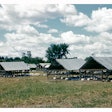The precise route of introduction of the H5N8 avian influenza virus into Europe still remains uncertain, says a scientific report of the European Food Safety Authority (EFSA) that has been generated in collaboration with member states and the EU Reference Laboratory.
It is plausible that the virus has entered poultry farms in Germany, the Netherlands and the United Kingdom indirectly, through material contaminated by infected wild birds - such as human activities, movement of vehicles or equipment, according to the study. However, since all affected farms use indoor housing facilities, experts conclude that a direct transmission from wild birds to farmed poultry is unlikely.
Experts say that there are no known direct migration routes from East Asia to Europe. One hypothesis is that infected migratory birds from East Asia transmit the virus to other species at breeding and stopover places in Eurasia, but this hypothesis needs further investigation.
As of the December 15 release of the study, the highly contagious avian influenza virus has been reported in Republic of Korea, Japan, China, Germany, the United Kingdom and the Netherlands. The first outbreak was reported in Republic of Korea in January 2014. In Europe, the first affected holding was reported on November 4 in a turkey farm in Germany. The virus was then confirmed at a duck farm in the United Kingdom, and at five poultry farms (four chicken farms and one duck farm) in the Netherlands.
Since the study was released, another avian influenza outbreak was reported at a fattening turkey holding in Italy.
EFSA recommends assessing biosecurity procedures at farms and improving them where necessary. The agency also recommends implementing targeted surveillance of wild birds in high risk areas and further investigation of possible entry routes of H5N8 into Europe. National and European laboratories and risk assessment institutions should continue to ensure timely analyses of the situation within the EU, the agency advised.

















